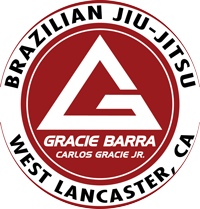Origins of Brazilian Jiu-Jitsu
How BJJ’s Growing Popularity Began
Brazilian Jiu-Jitsu is one of the most popular martial arts in world. It’s a core element in many MMA (Mixed Martial Arts) fighters’ arsenal and continues to grow in popularity, for self-discipline, fitness, and self-defense. For these reasons, it’s not surprising that parents are enrolling their children and teens in Brazilian Jiu-Jitsu classes as a unique way to express themselves and boost self-confidence.
But how did Brazilian Jiu-Jitsu come to be? As it turns out, BJJ has a long and colorful history.
According to most sources, Brazilian Jiu-Jitsu evolved from Japanese Jiu-Jitsu, although some claim it can be traced back to Buddhist monks of India. The original form of Jiu-Jitsu that BJJ derived from was called “Kano jiu-jitsu” but was often called Judo as its founder, Kano Jigoro felt “jiudo” described his system more accurately than jiu-jitsu.
A student of Kano Jigoro, Mitusyo Maeda, is credited for spreading “jiudo” through demonstrations he would give while visiting many countries in 1904. Maeda would often accept challenges from wrestlers, boxers, and various other martial artists as a way of showcasing the martial arts practice. He eventually arrived in Brazil in 1914.
During one of his performances in Brazil, Maeda caught the eye of Carlos Gracie who wanted to learn the art of Judo. Maeda accepted him as a student and taught Gracie for several years. Carlos passed on his knowledge to his brothers. One of his youngest brothers, Helio Gracie, developed Gracie Jiu-Jitsu which was focused more on grappling and leveraging as opposed to throws, which were common techniques in Judo.
The Gracies eventually began spreading their form of jiu-jitsu in the United States. While they referred to their style as Gracie Jiu-Jitsu, those outside the Gracie family referred to it as Brazilian Jiu-Jitsu, commonly called BJJ. BJJ has four major branches in Brazil: Gracie Barra, Gracie Humaita, Carlson Gracie, Alliance Jiu-Jitsu.
While Brazilian Jiu-Jitsu evolved from Judo, several changes were made to improve safety and enhance it as a spectator sport. Many techniques are the same but certain aspects such as spinal locks and cervical locks were not allowed due to the potential for serious injury.
During the 1970s, several Gracie family members move to the United States to teach their form of martial art. Rorion Gracie was one of the family members who notably started the Ultimate Fighting Championship in 1993.
The first few Ultimate Fighting Championships were won by Royce Gracie, an expert in BJJ. His victories often came against much larger opponents with different martial arts skills. His success helped cement BJJ as an essential skill for MMA and to drive Brazilian Jiu Jitsu’s popularity it enjoys today.
Interested in learning Brazilian Jiu-Jitsu? Sign up for a class today!
